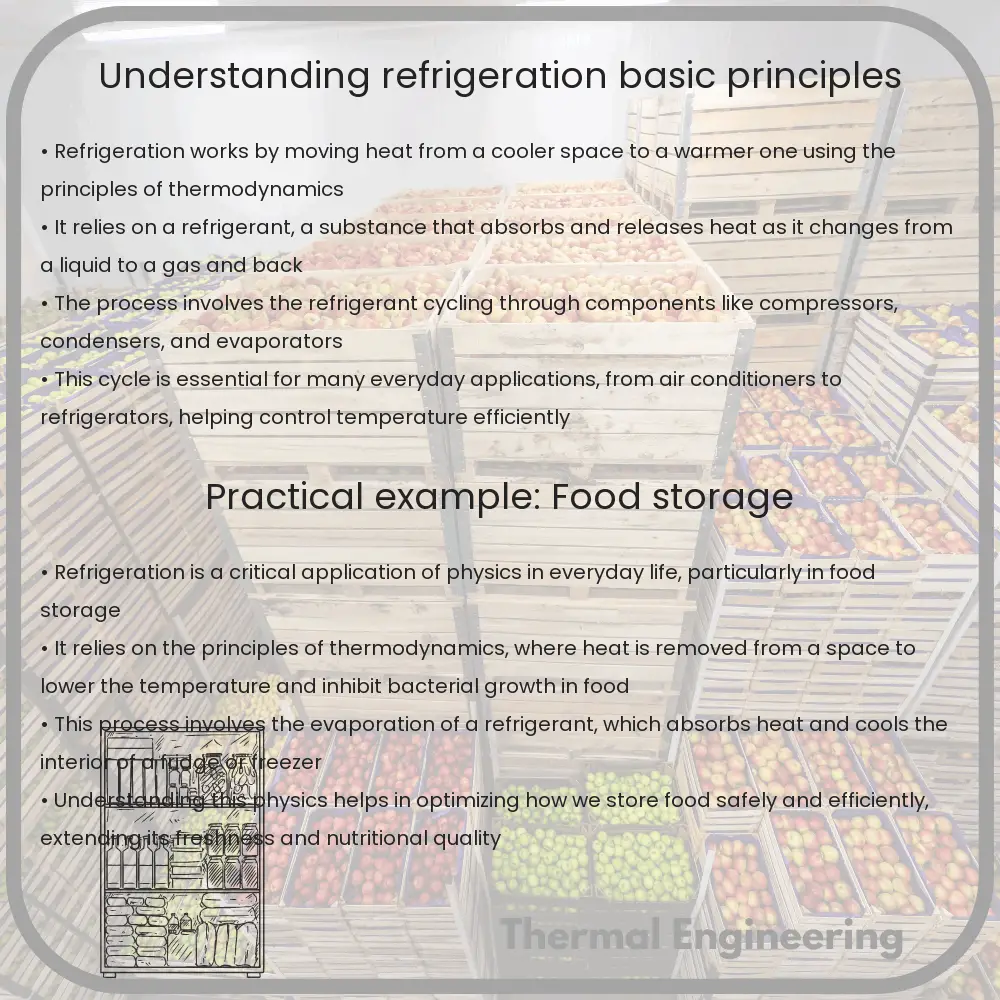Explore the fundamental principles and processes of refrigeration, including the refrigeration cycle, thermodynamics, and practical applications.

Understanding Refrigeration: Basic Principles
Refrigeration is an essential technology that impacts daily life through applications like food preservation and air conditioning. At its core, refrigeration is about moving heat from one place to another to achieve cooling. Here, we’ll delve into how this process works, covering the basic principles that underlie all refrigeration systems.
The Refrigeration Cycle
The refrigeration cycle is a series of stages that involve the compression, condensation, expansion, and evaporation of a refrigerant. Each component of the cycle plays a crucial role:
- Compression: The refrigerant, initially in a low-pressure gas form, is compressed by the compressor. This process increases the pressure and temperature of the refrigerant, turning it into a high-pressure gas.
- Condensation: The high-pressure, high-temperature gas flows through the condenser. Here, the gas releases its heat to the surroundings (usually the air or water outside the system), and it cools down and condenses into a high-pressure liquid.
- Expansion: The high-pressure liquid passes through an expansion device (like a valve or capillary tube) which reduces its pressure. This sudden reduction in pressure cools the liquid further as it prepares to enter the evaporator.
- Evaporation: In the evaporator, the now low-pressure, cold liquid refrigerant absorbs heat from the interior of the refrigerator or the area to be cooled. As it absorbs heat, it evaporates back into a low-pressure gas, and the cycle starts again with the compressor.
The continuous circulation of the refrigerant through these stages results in the removal of heat from one place and its release into another, effectively lowering the temperature in the refrigerated space while expelling heat to the environment.
Thermodynamic Principles
Refrigeration exploits basic principles of thermodynamics, particularly those regarding temperature, heat transfer, and the behavior of gases:
- First Law of Thermodynamics: This law, also known as the conservation of energy, indicates that energy can neither be created nor destroyed, only transferred or changed in form. In refrigeration, this principle explains transferring heat from a cooler to a warmer area.
- Second Law of Thermodynamics: This law states that heat does not naturally flow from a colder area to a warmer area without work being done (e.g., by the compressor).
Refrigerants
Refrigerants are substances used in a refrigeration system to absorb and transport heat. They have properties that allow them to change states at convenient temperatures and pressures within the cycle. Historically, substances like ammonia, carbon dioxide, and various halocarbons have been used. Modern refrigerants are often chosen based on their performance, environmental impact, and safety—factors like global warming potential (GWP) and ozone depletion potential (ODP) are considered critical.
Applications of Refrigeration
Refrigeration has diverse applications beyond keeping food cold in homes and supermarkets. Significant usages include:
- Air Conditioning: Residential and commercial buildings are kept cool in warm climates.
- Industrial Processes: Certain chemical processes require low temperatures.
- Medical Storage: Many medications and vaccines need refrigeration to maintain efficacy.
Understanding the basic principles of refrigeration not only informs us about a technology ubiquitous in daily life but also underscores the importance of engineering and thermodynamics in creating sustainable, effective solutions to human needs.